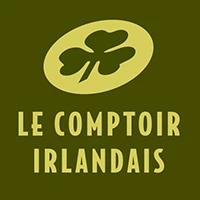Peated whisky selection
- Our Cellar
- Best spirits 2025
- Whisky
- Rum Cellar
- Gins
- Beers
- Ciders
- Champagne
- Cocktail selection
- Archives
- Other selections
- Offre Spéciale Verre
- Whisky, Rum, Gin and Beer Gift Boxes
What is peat?
Peat is the organic matter obtained from the decomposition of plants (grass, heather, moss, etc.) and sediments in peat bogs, areas saturated with water that are mainly found in Scotland and throughout Europe. It acts as a natural fuel when the malt is drying.
Peat and whisky
Peat is used during the cereal malting stage: it is burnt during drying, releasing aromatic molecules, also called phenols, which will flavour the green malt with its characteristic smoky aromas. The potency of these aromas will depend on the amount of peat burned, the combustion temperature as well as the exposure time. This technique, invented in Scotland, is still used in many countries.
Among the Scottish distilleries that develop peat whiskies we find in particular: Bruichladdich with its range of Octomore, Ardbeg renowned by peat lovers or even Benriach. Peat is not exclusively Scottish, other countries are also developing beautiful peaty bottlings such as India with the Paul John distillery or Japan with Mars whiskies.
What aromas do we find in a peated whisky?
The aromas of a peated whisky therefore vary depending on the amount of peat burnt, the combustion temperature and the exposure time.
In general, peated whisky is attributed a smoky aroma of its own. This can be more or less marked, and come in the form of other more or less delicate aromas. These include burnt rubber, fireplace and ash, or liquorice, cloves, camphor and even eucalyptus.
Peat level is measured in ppm, or parts per million, and indicates the amount of phenols that have adhered to the dry malt. Thus, the higher the content, the more peaty the whisky will be. There are thus several intensity of peat, we find very peaty whiskies, peaty whiskies and lightly peaty whiskies.
Tasting advice
To fully appreciate your whisky, pour a small amount (between 1.5 and 3 centilitres) into a tasting glass. It is preferable not to put ice cubes in your whisky, but you can optionally add water, preferably spring water, which will help to reveal and intensify the aromas of the whisky.
If you wish to taste multiple whiskies, it is recommended that you consume the peated whisky at the end of your tasting so that its powerful smoky notes do not obscure or alter the flavours of other lighter whiskies.






